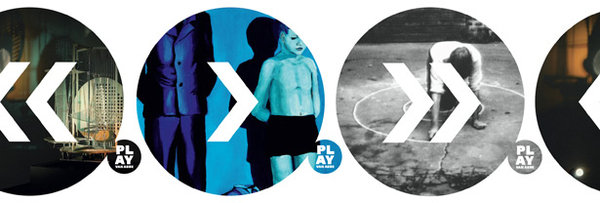Play Van Abbe - Part 2
dal 9/4/2010 al 29/9/2010
Segnalato da
Superflex
Carl Andre
Daniel Buren
Dan Flavin
Donald Judd
Bruce Nauman
Sol LeWitt
Andrzej Wroblewski
Daniel McClean
Christiane Berndes
Magdalena Ziolkowska
Diana Franssen
Steven ten Thije
9/4/2010
Play Van Abbe - Part 2
Van Abbemuseum, Eindhoven
Time Machines. In this part, utopian museum models of the past and radical historical prototypes are assessed to find out if and how they can be applied today. The museum reveals itself as a machine that continually produces a past via a mechanism of selection and exhibition: it is a time machine in the literal sense. Time Machines comprises three exhibitions: In-between Minimalisms, curated by Superflex, To the Margin and Back - Andrzej Wroblewski and Museum Modules.

On 10 April the second part of Play Van Abbe, Time Machines, will open. In this part, utopian museum models of the past and radical historical prototypes will be assessed to find out if and how they can be applied today. How does a museum tell a story through presentation techniques and what are the underlying assumptions? We will be delving into the structure of the museum to examine its foundations, historical and otherwise. The museum reveals itself as a machine that continually produces a past via a mechanism of selection and exhibition: it is a time machine in the literal sense. Time Machines comprises three exhibitions: In-between Minimalisms, To the Margin and Back – Andrzej Wróblewski and Museum Modules.
In-between Minimalisms
The Van Abbemuseum invited the Danish artists' collective SUPERFLEX to curate one exhibition with works from the museum's collection. SUPERFLEX engages in themes which are on the borderline between art and economics, like making information accessible to all and the restrictions placed on this via the system of rights. The collective chose works linked to topics like seriality, mass production, distribution, copyright and the art work as concept. In-Between Minimalisms features work by, among others, Carl Andre, Daniel Buren, Dan Flavin, Donald Judd, Bruce Nauman and Sol LeWitt. Picking up on artistic thinking from the nineteen sixties about art work as purely a concept, SUPERFLEX have created an installation especially for this exhibition that challenges the notion of ownership, distribution of and access to information.
To the Margin and Back – Andrzej Wróblewski
curated by Magdalena Ziolkowska
This exhibition is the first major retrospective of Andrzej Wróblewski (1927-1957) to be held outside Poland. His work reveals that experimental art in post-war Poland had the same intensity as its counterpart in the West. With this exhibition, the Van Abbemuseum aims to place the concept of modern art within a broader geographical context. The show throws the familiar frameworks for the mainly western story of art into disarray, while reflecting on the side about how museums have helped give rise to this well-known history.
Museum Modules
curated by Diana Franssen and Steven ten Thije
The exhibition Museum Modules comprises four modern interpretations of the way art was presented in the twentieth century. The outwardly diverse appearance of these historic models, drawn to our attention by invited artists, designers and researchers, provides an intriguing insight into the history of the museum. Art historian and researcher Kai-Uwe Hemken and designer Jakob Gebert have realised – posthumously – the design for Raum der Gegenwart (Room of Today) by artist László Moholy-Nagy and museum director Alexander Dorner from 1930. The Museum of American Art Berlin gives a playful yet disturbing view of the early origins of the Museum of Modern Art (MoMA), New York. The film maker Florian Schneider along with artist Kim de Groot explores André Malraux's vision of a Musée Imaginaire and looks at the influence of photography on the development of the museum. Finally, artist Wendelien van Oldenborgh has recreated the exhibition concept of the Italian architect Lina Bo Bardi from 1968. These contemporary re-workings of historic exhibition models expose the familiar image of the modern museum and suggest a possibly entirely different one for the future.
Play Van Abbe, Part 2: Time Machines
The three aforementioned exhibitions together form the second part of the multifaceted, eighteen-month running programme Play Van Abbe in which the role of the contemporary art museum in the 21st century is explored. Each part of the programme looks at the functioning of the museum in the past, present and future. In Part 2, Time Machines, the concept of time has a pivotal role. Time Machines is about how art history is written and addresses the issue of the influence of the traditional perspective on the museum. This part breaks firmly away from the idea that the museum is neutral and objective. On the contrary, it is suggested that the museum is a time machine which uses subjective devices in order to arrange time and to collect and present its art.
What's next: Play Van Abbe Part 3 and 4
The third part of Play Van Abbe, called The Politics of Collecting/The Collecting of Politics, begins on 25 September 2010 and is on view until the end of January 2011. In this part the act of collecting falls under the spotlight. Part 4, called The Tourist, the Pilgrim, the Flaneur (and the worker), will investigate the pleasure of being a visitor to the museum and how to intensify that experience. This final part will run from January 2011 until June 2011.
Marketing, Communications & Press
Ilse Cornelis +31 (0)40 2381019, +31 (0)6 12995794 pressoffice@vanabbemuseum.nl
Opening: Saturday 10 April 2010, 4 pm
Van Abbemuseum
Bilderdijklaan 10, Eindhoven – The Netherlands
Opening times: Tuesday to Sunday, 11:00 to 17:00.
The museum is closed on Monday, with the exception of public holidays.
The Van Abbemuseum is open until 21:00 on Thursday evenings, admission to
the museum is free from 17:00 on those nights.
Also the museum cafe is open until 21:00 on Thursday evenings.



